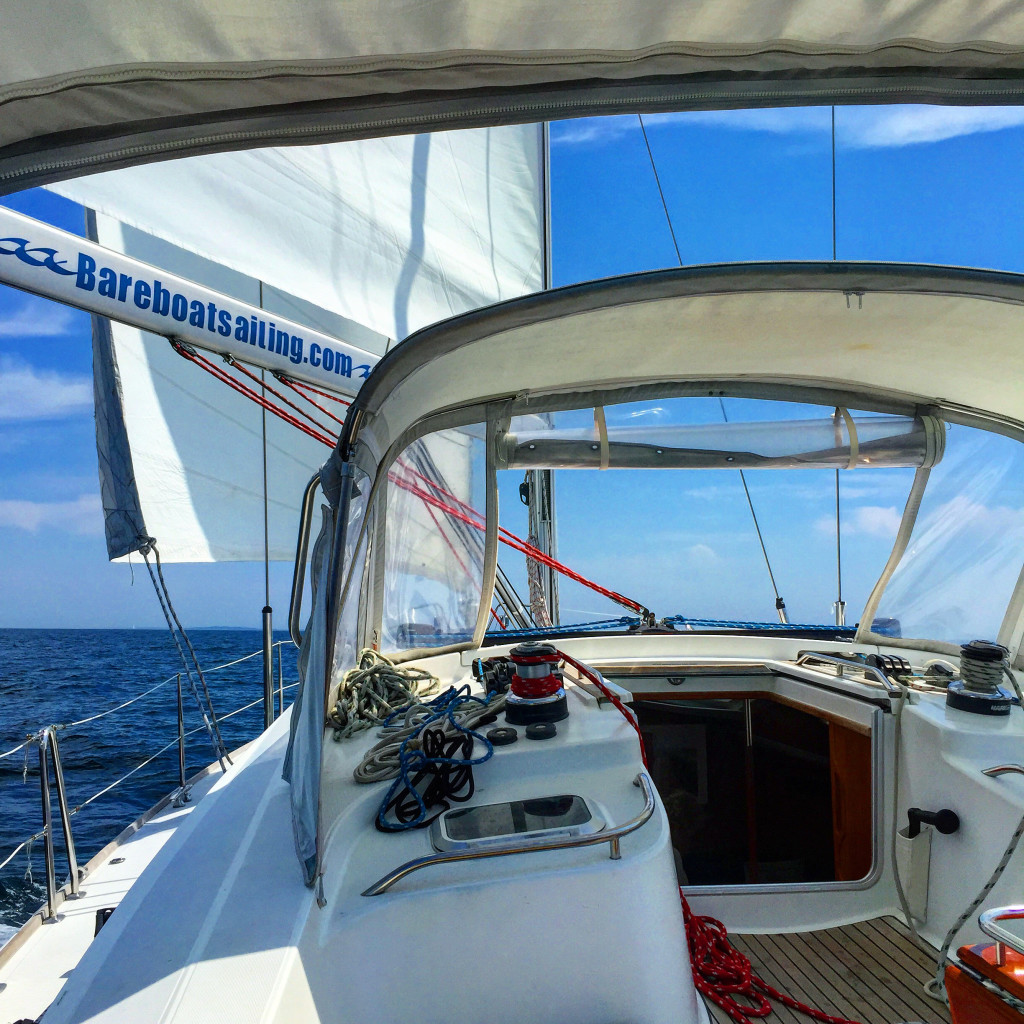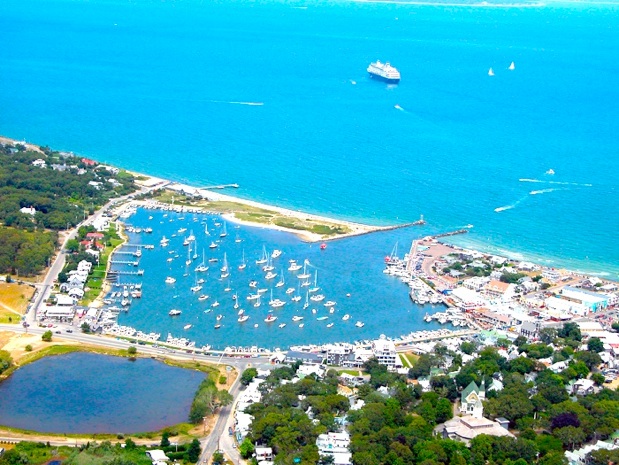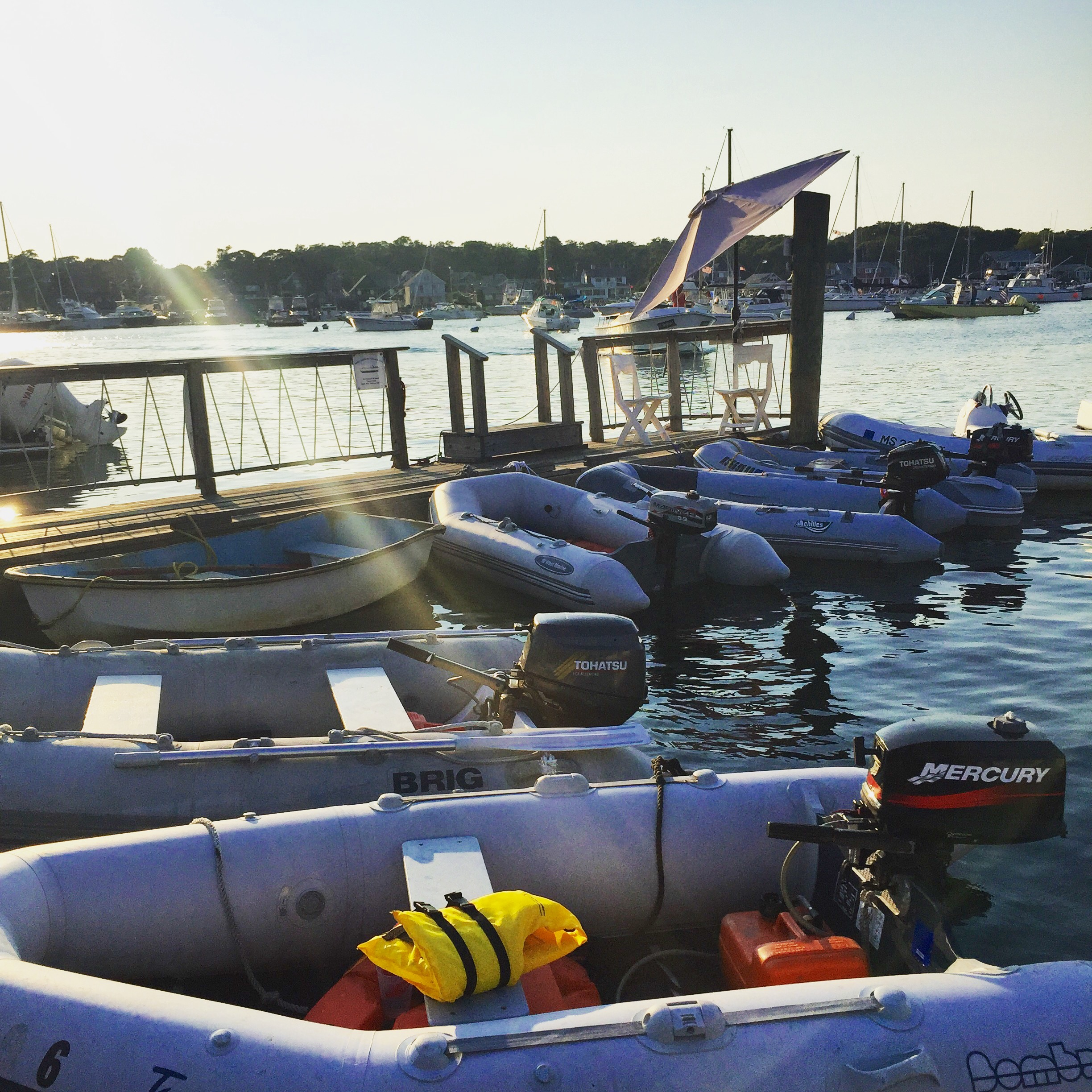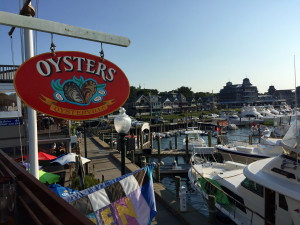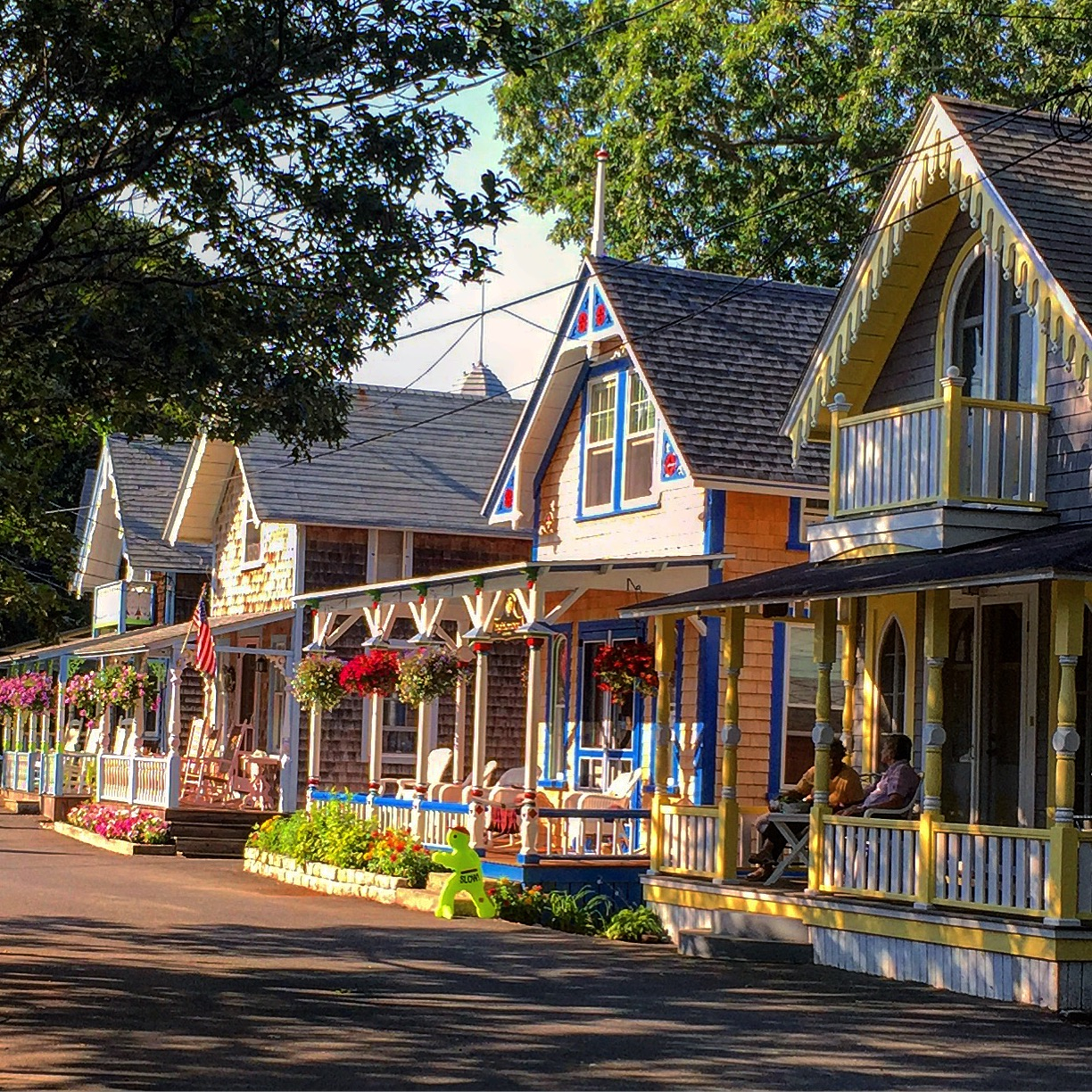
03 Sep Sailing New England – Back in time at Oak Bluffs
Last week I wrote about a recent sailing trip in New England, and our visit to the magical island of Cuttyhunk. As sad as I was to leave Cuttyhunk, there was still much ground to cover on our trip. From Cuttyhunk, we had a lovely 20nm sail through Vineyard Sound, ending up in Oak Bluffs on Martha’s Vineyard.
While Cuttyhunk and Martha’s Vineyard were both discovered by Bartholomew Goswald in 1602, the similarities end there. Where Cuttyhunk is 1 square mile in area, Martha’s Vineyard is 100 square miles – the third largest island on the U.S. east coast. Cuttyhunk has less than 40 year round residents, while Martha’s Vineyard has about 17,000 – with the population swelling to 100,000 in the summer season. Martha’s Vineyard rose to prominence in the heyday of the whaling industry, which had all but collapsed by 1870. But it quickly became a favored summer destination for prominent east coasters from Boston, New York and Washington. Many of the homes on the island have been handed down from generation to generation.
We chose Oak Bluffs as our first port of call on the Vineyard. Knowing we were traveling during one of the most popular weeks of the year, we set off early to try and secure a mooring in the Oak Bluffs Marina. It’s the largest marina on the island, with 80 slips and 45 moorings, but they only take reservations for slips. We were sailing a 50′ Jeanneau, and slip fees for our boat would have been $200 vs. a mooring for $40. So being sailors, we decided a mooring would allow more funds for eating and drinking. Practical, right?
Even though we arrived by 1pm, all the moorings were taken. The dockmaster told us we could raft up with any boat in the mooring field of a similar size. This was new to us. We’d all rafted up before, when we were traveling with friends and wanted to socialize between boats. But rafting up to a stranger’s boat felt…well, strange. Nevertheless, we found a suitable candidate and pulled alongside, jumping on their boat to secure the lines. The boat owners showed up a few minutes later, a sweet family of four taking a last vacation before the start of school. Apparently they’d been to Oak Bluffs before, because they weren’t surprised to find us tied up to their boat. This is one of the things I love about boat people. They recognize other boat people as instant community.
The town marina at Oak Bluffs is very well sheltered, and has both fuel and pumpout facilities. In the summer, there’s a launch until midnight that picks up at your boat and deposits you just in front of Nancy’s, a local favorite bar and restaurant. There’s also a dinghy dock on the same corner. Provisioning here is easy; there’s a well-stocked liquor store just a block from the dinghy dock (Jim’s Package Store) and another a short walk up the main drag, Circuit Avenue. Also within walking distance, the Reliable Market has decent produce, a good deli, and all the staples you would need. They’re open 7 days a week, but only until 6pm (and 1pm on Sundays).
After rafting up and getting restocked on wine and a few other necessities, we took the dinghy to the edge of the marina closest to the Sound, pulled it up on the sand, and then took a short walk over the dune to East Chop Beach. It’s a small beach facing the sound with little wave action, so it’s good for a quick swim. Oak Bluffs has several other beaches; Town Beach is close to the action but a little rocky, as is Inkwell Beach. The nicest is Joseph Sylvia State Beach, which stretches for several miles along Beach Road on the thin strip of land between Oak Bluffs and Edgartown that separates the Sound from Sengekontacket Pond. It’s small waves and sandy shore make it great for swimmers of all ages; it’s where I’d go if spending a day at the beach while in Oak Bluffs.
In addition to the beaches, there’s a fair amount to do and see in Oak Bluffs. The Flying Horses Carousel is the oldest platform carousel in the U.S.; it first entertained visitors to New York’s Coney Island in 1876 but has been in Oak Bluffs since 1884 and is now a designated historical landmark. Ocean Park is right in the center of town, and all of the restaurants, boutiques and art galleries are an easy walk from the marina. One of the best things about Martha’s Vineyard is the 44 miles of protected bike trails. We rented bikes from Anderson’s Bike Rentals, just across from the dinghy dock, and rode along the coast road to Edgartown – a spectacular ride with the water in view most of the way – highly recommended. But the thing that really makes Oak Bluffs unique is the Martha’s Vineyard Camp Meeting Association (MVCMA).
In the late 1800s, Methodists began gathering in Oak Bluffs each summer for religious meetings – part of the the camp meeting movement of the time. At first, everyone stayed in communal tents arranged in a circle around the worship area. Eventually, families set up their own tents. And as the years went by, they began erecting petite wooden houses instead of tents, trying to outdo each other in how ornate they could make each cottage. The architectural style they created and perfected is now known as “Carpenter Gothic.” The primary characteristic of Carpenter Gothic is the fanciful scrollwork that’s applied to the front of the wooden structures. In addition to the gingerbread details, all the camp meeting houses are painted bright colors and have cheerful gardens and front porches adorned with rocking chairs.
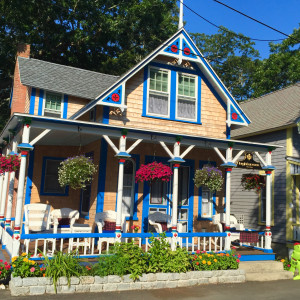
A cottage in the Martha’s Vineyard Camp Meeting Association showing the typical Carpenter Gothic style.
The historic district is so beautifully preserved, it feels like walking onto a movie set – for a movie about an idyllic summer in small town America, 100 years ago. Yet the area is vibrant and alive. Kids were playing in the grassy oval outside the Tabernacle, and old folks sat on their front porches playing cribbage. The Tabernacle, built in the 1880s, is an impressive structure – a large, circular, open-sided pavilion covered by a metal roof and supported by tall wrought iron columns. As the largest assembly space on the island, it’s still used for services and events all summer.
At one time there were over 500 of the highly ornamented cottages in the town originally incorporated as Cottage City. The name was changed in 1907 to Oak Bluffs (with an eye towards tourism, even then!). Today there are about 350 cottages that are protected by National Historic Landmark designation.
Walking around the MVCMA felt like stepping back in time. Back to a day when summers were more leisurely, when there was time to sit on the front porch in the afternoon and wait for the cool of the sea breeze. The charm is inescapable, and the feeling of being in a different time and place is intoxicating. In fact it made me want to come back and stay. I looked into cottage rentals, and there are a few available, ranging from $2000- $3,500 per week. Sigh. I guess there’s always next summer.
For now, it was on to Nantucket.

